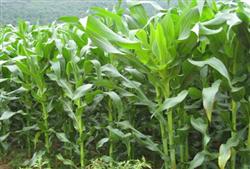Fertilization Technology of Sorghum
Sorghum is an important economic food crop in China. It is planted in all regions. It is extremely adaptable to soil. However, it is easier to obtain high yield in higher fertility soil, while it will decrease in poor soil. So fertilization is the key point to achieve high yield in planting sorghum, so how should sorghum be fertilized? Let's take a look.

1. Fertilize according to variety characteristics
When planting, carefully observe the fertilizer requirement characteristics of varieties. For fertile varieties, completely decomposed organic fertilizer should be used as base fertilizer. More organic fertilizer or inorganic fertilizer should be applied when fertilizing. Generally, 2000 to 3000 kg organic fertilizer should be applied per mu, and topdressing should be applied 2-3 times in the whole growth process to ensure that it has sufficient fertility to grow. Urea, phosphorus and potassium fertilizer should be applied when topdressing. For varieties with low fertilizer requirements and short growth period, organic fertilizer can be applied as base fertilizer, topdressing amount and topdressing times should be less, generally topdressing once, if the base fertilizer is enough, no topdressing is required.
2. Fertilize according to soil conditions
It is preferable to plant sorghum in loose and fertile soil, but this is not the case in every area, so pay attention to the fertility and nature of the soil when fertilizing. If it is a soil with low fertility, it should be mainly organic fertilizer and phosphorus fertilizer; soil with poor water and fertility protection should be mainly topdressing, supplemented by basal fertilizer, and applied less many times each time, otherwise excessive application at one time, but poor soil fertility protection will lead to waste of fertility. If the pH value of the soil is relatively high, it will become acidic or alkaline soil, which will have certain influence on the quality and yield of sorghum. Lime nitrogen and calcium magnesium phosphorus can be applied to acidic soil during planting, while ammonium sulfate or calcium superphosphate can be applied to alkaline soil to adjust their pH value and make it neutral and suitable for sorghum growth.
3. Fertilize according to climate
Climate change will also affect sorghum growth, and fertilization is no exception, according to the climate change for fertilization, such as in early spring, the temperature is low, then appropriate to use phosphorus, potassium fertilizer to promote seed germination. In the early and middle stages of seedling growth, the climate gradually picks up and warms up. At this time, nitrogen fertilizer should be applied to promote the rapid growth of seedlings. In the late stage of growth, the temperature begins to drop again. At this time, phosphorus and potassium fertilizer should be sprayed on the leaves to promote maturity and improve yield and quality.
4, according to the nature of fertilizer fertilization
Fertilization to understand the role and nature of each fertilizer, sorghum rapid growth, human and animal manure, urea and other nitrogen fertilizer quick effect, suitable for use as topdressing, and organic fertilizer slow effect, phosphorus, potassium mobility is small, suitable for use as base fertilizer or seed fertilizer.
The above is the sorghum fertilization technology all content, hope to help you, want to know more sorghum planting knowledge, please pay attention to us.
- Prev

Succession of spring corn and transplanting soybean
1. The characteristic of soybean is warm. The seeds begin to germinate at 10-12 ℃, the optimum temperature for growth is 15-20 ℃, the optimum temperature for growth is 20-25 ℃, the suitable temperature for flowering and podding is 20-28 ℃, the pod setting is delayed at low temperature, and the plants with high temperature end ahead of time if the temperature is lower than 14 ℃. Seed germination requires more moisture and flowering stage.
- Next

Key points of Spring Maize cultivation
According to local conditions, Yedan 13 and Xiyu 3 were selected to popularize in plain and hilly areas, with Huayu 4, Zhongdan 32, Chenghai 1 and Expedition 808; Yedan 22 and Yedan 51 with short stalk and short growth period were selected for interplanting in cotton fields; fresh food was given priority to in the suburbs, and waxy corn such as Zhongnuo 1 could be planted (2319 mai 21.00). ...
Related
- The first cup of black tea in spring, the flavor and history of tea gardens in Kenya, Africa
- The computer can not only choose potatoes, but also grow tea rice. AI will grow winter oolong tea champion.
- It is not only the inflated tea bitten by insects, but also engraved with the four seasons tea in Beipu.
- The Oriental Beauty Tea Festival in Zhuxian County takes the stage at the weekend to experience the plus-size feast of oil tea.
- & quot; Oriental Beauty Tea & Exploration of Emei in Hsinchu, the hometown of quot;
- The new variety of strawberry "Tainong 1" dessert is the first choice with mellow aroma. Crimson gorgeous
- History of Tea in Taiwan: from Wild Inner Mountain to Export Tea Garden
- Two types of Taiwan Oriental Beauty Black Tea won the British three-Star Award for Childhood Tea Xiang Zhang Jiaqi changed from pilot to champion tea maker.
- Banana species and varieties: the planting history of Taiwan Xianren banana and dwarf banana is long, is banana disease resistant?
- Coffee planting Technology: Qianjie Coffee from Seedling to harvesting

